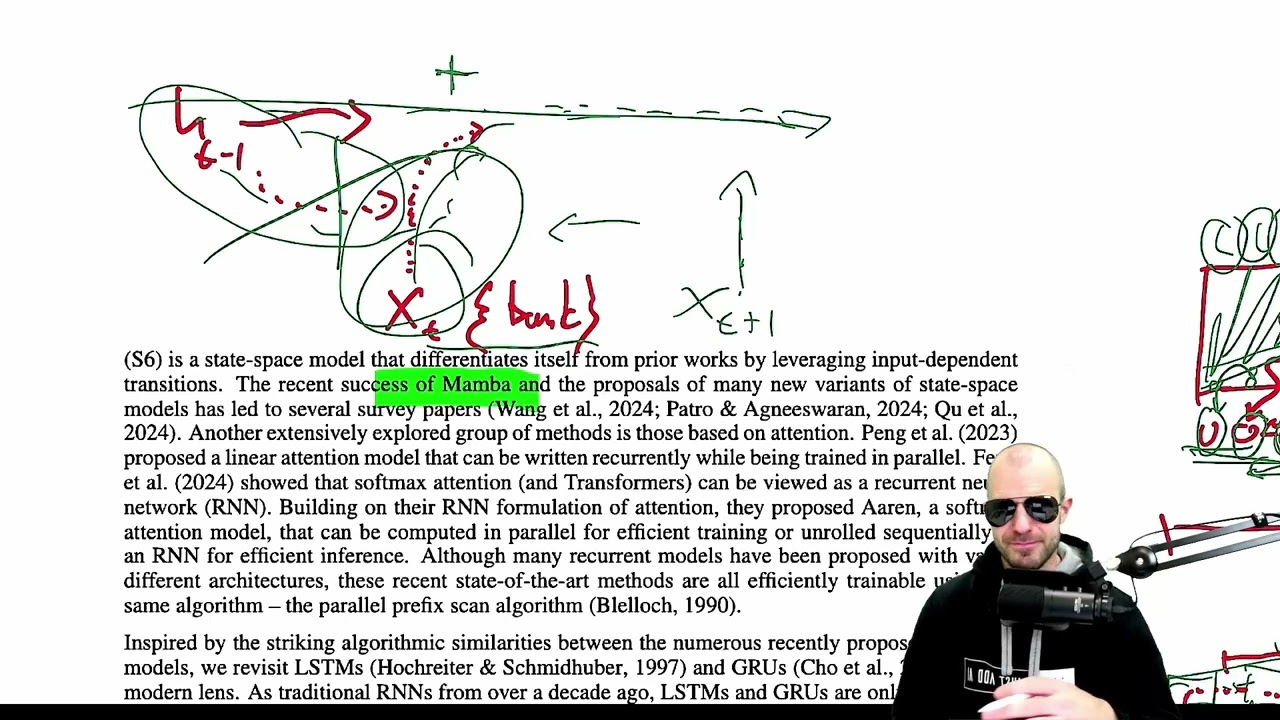The video reviews the paper “Were RNNs All We Needed?” which argues that simpler RNN models might perform as well as more complex architectures like S4 and Mamba, although it critiques the weak experimental evidence supporting this claim. It highlights the differences between RNNs and Transformers, introduces a minimal RNN variant called the Min GRU, and emphasizes the need for more rigorous testing to validate the proposed models’ effectiveness.
The video discusses the paper “Were RNNs All We Needed?” which questions the necessity and effectiveness of modern recurrent neural network (RNN) architectures like S4 and Mamba compared to traditional RNNs. The authors, including notable researcher Yoshua Bengio, propose that simpler RNN models, when treated correctly, might perform just as well as these more complex models. However, the video notes that the paper provides weak experimental evidence to support this hypothesis, leaving room for skepticism about its conclusions.
The video explains the fundamental differences between RNNs and Transformer models. RNNs process sequences of arbitrary lengths by maintaining a hidden state that is updated with each new input, allowing for constant memory requirements. In contrast, Transformers require quadratic memory and computation due to their attention mechanisms, which can limit their ability to handle long sequences. The video highlights that while RNNs have historically struggled with issues like backpropagation through time, advancements like LSTMs and GRUs have improved their performance.
The paper aims to distill the essence of complex models like S4 and Mamba into simpler RNN architectures that do not rely on past hidden states for input processing. The authors introduce a minimal RNN variant called the Min GRU, which simplifies the computation by making the next hidden state dependent only on the current input. This allows for parallel computation, making it more efficient than traditional RNNs while still retaining some performance characteristics of more complex models.
The video critiques the experimental results presented in the paper, particularly the selective copying task and reinforcement learning benchmarks. It suggests that the tasks chosen may not adequately demonstrate the capabilities of the proposed models, as they are relatively simple and may not require the complexity of RNNs. The video emphasizes that while the Min GRU performs well on these tasks, the benchmarks may not be challenging enough to provide a fair comparison against more sophisticated models.
In conclusion, the video acknowledges the interesting hypothesis posed by the paper regarding the sufficiency of simpler RNNs. However, it stresses that the experimental evidence is lacking and that further research is needed to validate the claims. The discussion highlights the ongoing debate in the field of deep learning about the trade-offs between model complexity and performance, suggesting that while simpler models may have merit, they must be rigorously tested against a wider range of tasks to determine their true effectiveness.
